Explanation of my 10 Ballon d'Or 1960
This is my ranking, my opinion on the Ballon d'Or of the year 1960. This ranking is based on the calendar year, not the season. What counts for this ranking is the player's regularity over the calendar year, the number of matches played, the ability to raise his level in big games, statistics (goals, assists, clean sheets, goals conceded, etc.) and trophies won (collective and individual).
#10 Alberto Spencer
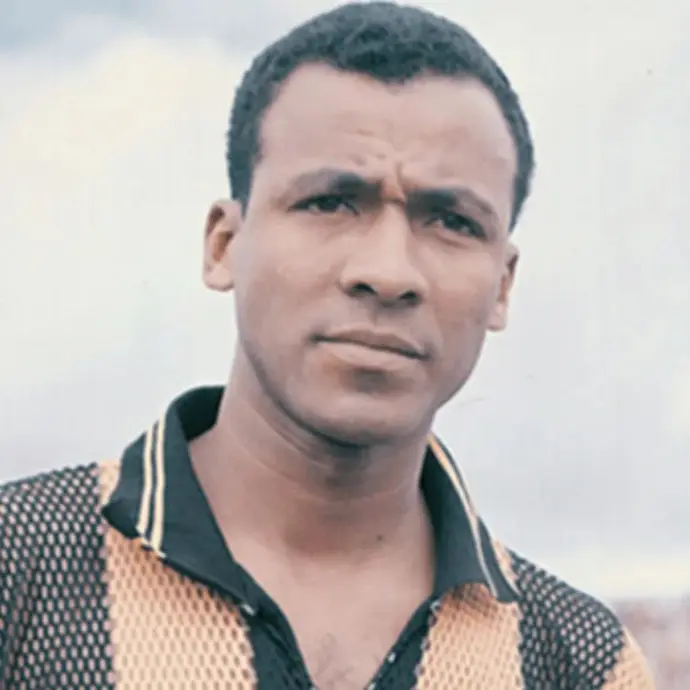
- Age : 22 years old
- Club : CA Peñarol
- Statistics : 49 games, 29 goals, / assists
- Trophies : Copa Libertadores, Finalist Intercontinental Cup, Uruguayan League
- Individual Awards :
Copa Libertadores POTY, Copa Libertadores TOTY, Copa Libertadores Golden Shoe (7 goals)
In 1960, Alberto Spencer—“El Cabeza Mágica”—was rapidly ascending as one of South America’s deadliest forwards, laying the groundwork for a legendary decade. Wearing the black and yellow of Peñarol, he played with commanding style and unmatched aerial dominance, helping the Uruguayan giants clinch the Primera División title that year and establishing himself as a cornerstone of their attack. Spencer’s game was a blend of poise and power. Whether ghosting into the box or soaring for headers with uncanny timing, he tormented defenders and delivered goals with a quiet ruthlessness. Though the inaugural Copa Libertadores had begun that year, Peñarol’s full continental breakthrough was still ahead—but Spencer’s performances already had fans and pundits buzzing across the region. As a rare player who would represent both Ecuador and Uruguay at international level, 1960 was also a year where his dual identity began gaining attention. His pace, strength, and instinct inside the penalty area weren’t just assets—they were seismic shifts in how strikers could influence the rhythm of a match.
#9 Bobby Charlton
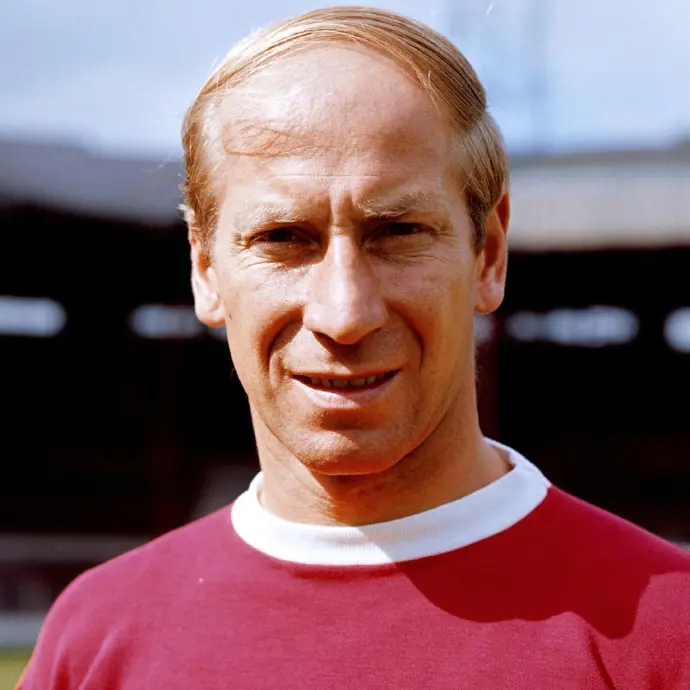
- Age : 22/23 years old
- Club : Manchester United
- Statistics : 50 games, 29 goals, / assists
- Trophies : British Home Championship
- Individual Awards : Premier League TOTY
In 1960, Bobby Charlton was emerging as England’s midfield talisman—a player with vision, drive, and a thunderous shot that seemed engineered in steel. At Manchester United, he was rebuilding alongside the club after the devastating Munich air disaster two years prior, shouldering the responsibility of a new generation with quiet leadership and resurgent brilliance. That year, Charlton played primarily in an attacking midfield role, blending creativity with goal-scoring finesse. His intelligence on the ball and ability to switch the tempo turned United’s rebuild into a competitive resurgence. While the team didn’t lift major silverware that season, Charlton’s influence was profound—scoring consistently and connecting midfield to attack with remarkable fluidity. Internationally, he solidified his presence in the England squad, using 1960 as a stepping stone toward becoming the spine of the Three Lions. His range of passing and thunderous long-range strikes became trademarks—flashes of power wrapped in poise.
#8 Alfredo Di Stéfano
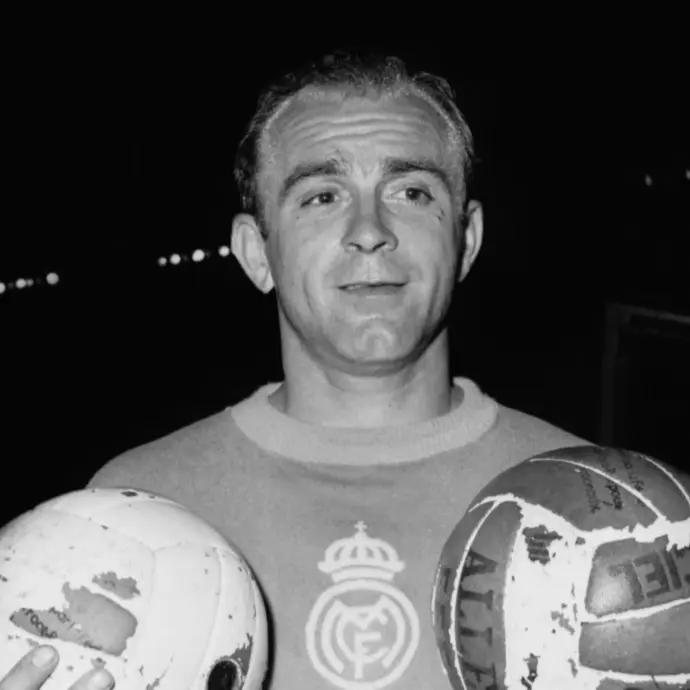
- Age : 33/34 years old
- Club : Real Madrid
- Statistics : 36 games, 27 goals, / assists
- Trophies : Champions League, Intercontinental Cup, Liga Vice-Champion, Finalist Spanish Cup
- Individual Awards : Champions League TOTY, Liga TOTY
In 1960, Alfredo Di Stéfano was the grand architect behind one of the most exhilarating chapters in Real Madrid’s history. At 33, he was still the heartbeat of Los Blancos—linking play from deep, reading the game like a chess master, and commanding every inch of the pitch. That year, Madrid secured the La Liga title, with Di Stéfano orchestrating attacks and scoring freely, proving his brilliance wasn’t dimming—it was maturing. But it was in the European Cup final where his legend truly soared. Against Eintracht Frankfurt in the iconic Hampden Park showdown, Di Stéfano scored a hat-trick and assisted Puskás, helping Real Madrid steamroll to a 7–3 victory. It wasn’t just dominance—it was symphonic. Di Stéfano dropped into midfield, surged into the box, and pulled strings everywhere, turning the final into a masterclass of movement and control.
# Jimmy Greaves
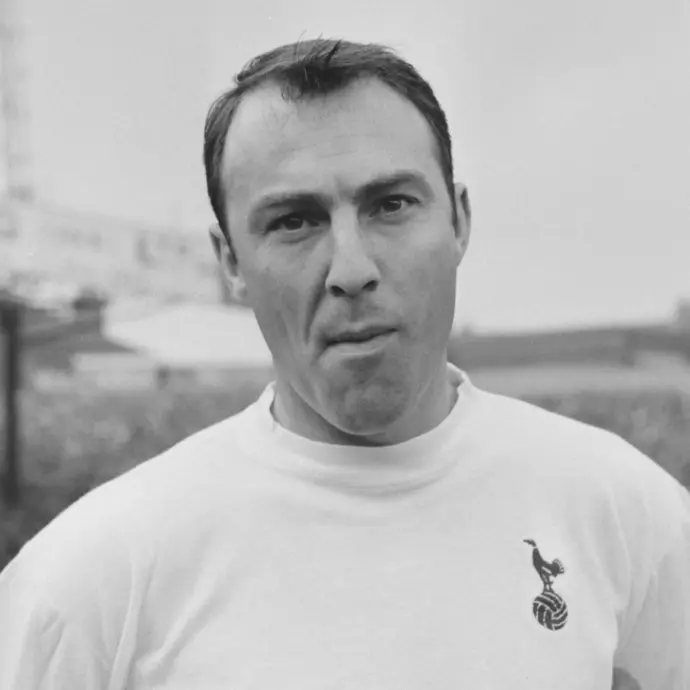
- Age : 19/20 years old
- Club : Chelsea FC
- Statistics : 50 games, 46 goals, 8 assists
- Trophies : British Home Championship
- Individual Awards : Premier League TOTY
In 1960, Jimmy Greaves was in his final—and most explosive—season with Chelsea, igniting the First Division with an unrelenting goal rush that confirmed his status as England’s most natural-born finisher. At just 20 years old, he scored an astonishing 29 league goals in 40 matches, becoming the top scorer for the third consecutive season and electrifying Stamford Bridge with a dazzling mix of poise, agility, and killer instinct. Greaves wasn’t just clinical—he was unpredictable. One moment he'd drift into space unnoticed; the next, he’d deliver a swift, surgical strike that stunned defenders and goalkeepers alike. His goals came in every imaginable fashion: sly tap-ins, curled finishes, power drives, and delicate chips. Chelsea might not have claimed silverware, but Greaves made every match a showcase, often single-handedly keeping the Blues in contention.
#6 Kurt Hamrin
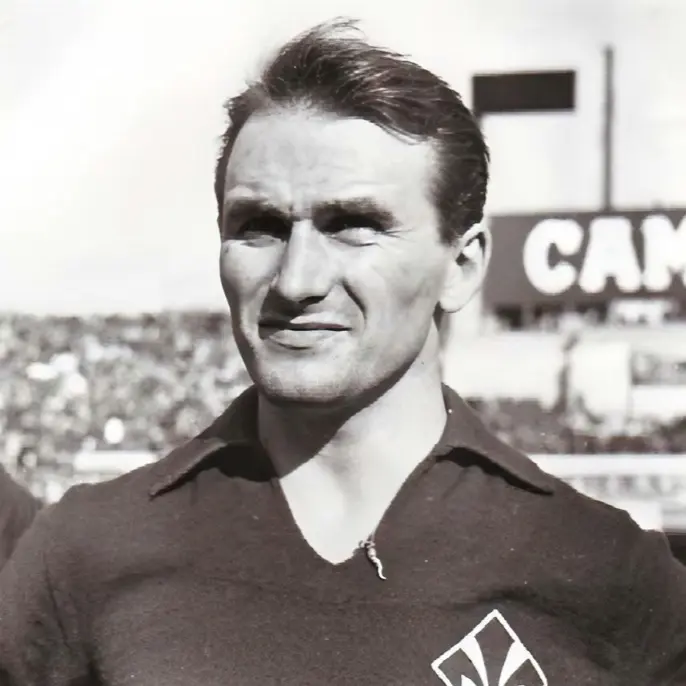
- Age : 25/26 years old
- Club : Fiorentina
- Statistics : 60 games, 13 goals, 26 assists
- Trophies : Serie A Vice-Champion, Finalist Italian Cup
- Individual Awards : Serie A TOTY
In 1960, Kurt Hamrin—Sweden’s silk-footed sorcerer—was lighting up Serie A with a blend of artistry, explosiveness, and precision that made Fiorentina a must-watch act. Nicknamed “Curre,” he posted 26 goals across all competitions that season, tearing through defenses with his trademark jinking runs and lethal finishes. His ability to ghost past full-backs and thread the narrowest of angles made him one of Italy’s most dangerous wingers. Though Fiorentina didn’t capture major silverware that year, Hamrin’s performances were nothing short of spectacular. His creativity and flair transformed matches, often with solo efforts that left crowds gasping and keepers rooted. In a league brimming with tactical rigidity, he brought poetry—a Scandinavian breeze cutting through Italian granite.
#5 Pelé
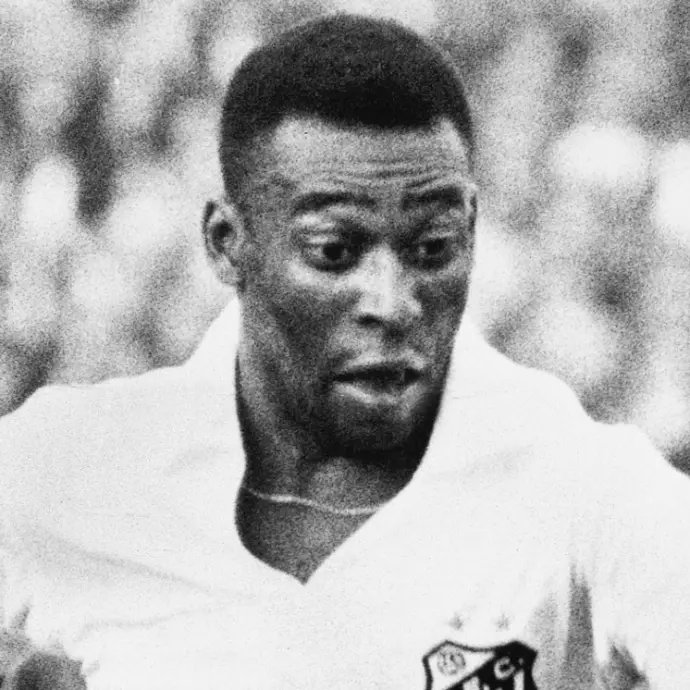
- Age : 19/20 years old
- Club : Santos FC
- Statistics : 42 games, 38 goals, 18 assists
- Trophies : Copa del Atlántico, São Paulo Championship
- Individual Awards : São Paulo Championship Golden Shoe (33 goals)
In 1960, Pelé was pure fire in motion—an unstoppable phenom transforming Santos into a global spectacle and laying the groundwork for a dynasty. Just 19 years old, he topped the scoring charts in the Campeonato Paulista with 33 goals, helping Santos clinch the title with flair and dominance. His speed, improvisation, and killer instinct turned matches into solo exhibitions, each goal reinforcing that this was no ordinary talent. Although Santos hadn’t yet entered the Copa Libertadores, they toured internationally with Pelé as their radiant ambassador. In Europe and South America, he wowed stadiums with dazzling dribbles and audacious finishes, making fans and players alike stop and stare. These exhibitions weren’t just warm-ups—they were declarations: Pelé had arrived, and the world was taking notice. For Brazil, he continued to mesmerize in friendlies, scoring freely and combining with stars like Garrincha to paint beautiful footballing canvases. Whether weaving through defenders or launching rocket-like strikes, 1960 was the year the boy wonder turned into a force of nature. Not merely a rising star, Pelé was the game’s future unraveling before everyone’s eyes—a king before the crown was even forged.
#4 Uwe Seeler
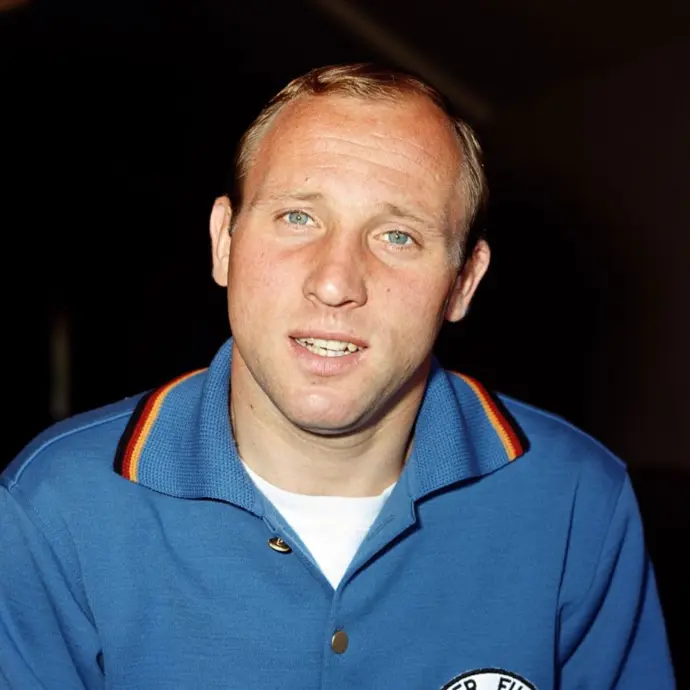
- Age : 23/24 years old
- Club : Hamburg SV
- Statistics : 40 games, 54 goals, / assists
- Trophies : German League
- Individual Awards : German POTY, Oberliga North Golden Shoe (36 goals)
In 1960, Uwe Seeler was Germany’s golden striker—relentless, courageous, and clinically brilliant. Leading Hamburger SV with fierce loyalty and explosive form, Seeler finished the season as the Bundesliga’s top scorer, bringing power, agility, and aerial dominance to every match. Though the Bundesliga wasn’t officially formed until 1963, Seeler was already the undisputed king of German football, tearing up the Oberliga Nord and national championship with a barrage of goals. That year, Seeler also shined for West Germany, delivering vital contributions during international fixtures and emerging as the team’s talisman. His work ethic and humble charisma made him a fan favorite—an everyman hero who turned grit into greatness. Off the ball, his movement was sharp; on it, he was decisive. With a thunderous right foot and uncanny anticipation, Seeler embodied the archetype of a complete striker.
#3 Luis Suárez
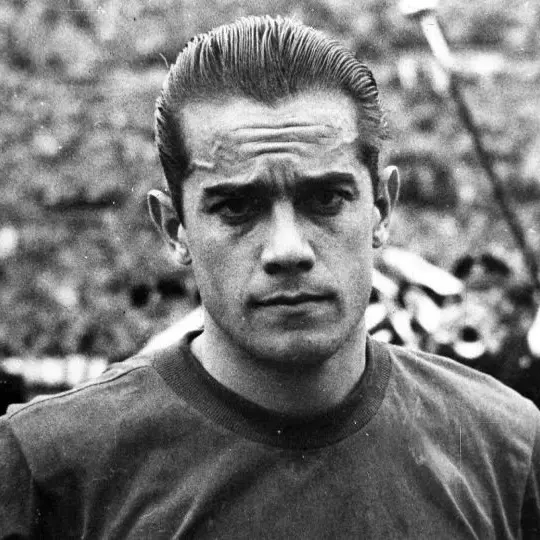
- Age : 23/24 years old
- Club : FC Barcelona
- Statistics : 38 games, 18 goals, 14 assists
- Trophies : Cities Fairs Cup, Liga
- Individual Awards : Liga TOTY
In 1960, Luis Suárez Miramontes—“El Arquitecto”—was the elegant commander of Barcelona’s midfield, sculpting matches with vision and surgical precision. At 23, he was already the fulcrum of both club and country, orchestrating attacks and controlling tempo with effortless grace. That season, he helped Barcelona secure the Spanish Cup and mount a fierce challenge in La Liga, mesmerizing fans with his deep playmaking and cerebral approach to the game. Suárez also left his mark on the European stage, guiding Barça to the semi-finals of the European Cup and earning widespread acclaim for his performances. His ability to transition from defense to attack, combined with pinpoint distribution, made him one of the most complete midfielders of the era—a technician who saw the game in three dimensions.
#2 Lev Yashin
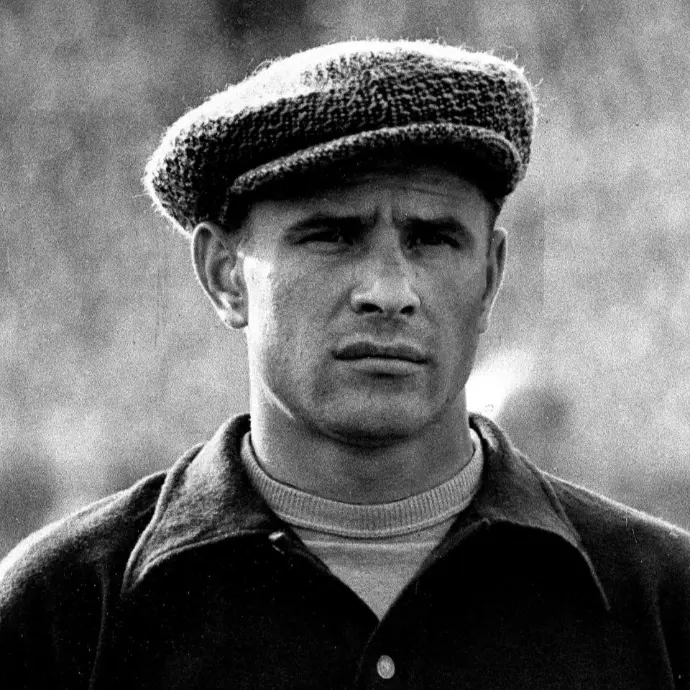
- Age : 30/31 years old
- Club : Dynamo Moscow
- Statistics : 23 games, 22 goals conceded, 12 clean sheets
- Trophies : Euro
- Individual Awards : Euro TOTT, USSR League TOTY
In 1960, Lev Yashin—“The Black Spider”—was already weaving his legend in net, redefining what it meant to be a goalkeeper with acrobatic reflexes, commanding presence, and icy composure under pressure. Wearing his signature all-black kit, he stood as the immovable force for Dynamo Moscow, guiding them to the Soviet Top League title with a string of masterful performances and astonishing saves that turned matches on their heads. Internationally, Yashin anchored the USSR squad with steely confidence, playing a crucial role in their triumph at the inaugural European Nations’ Cup. His leadership and brilliance between the posts were instrumental as the Soviets conquered the continent, with Yashin keeping attackers at bay and showing the world that goalkeeping could be just as glorious as scoring.
Winner : Ferenc Puskás
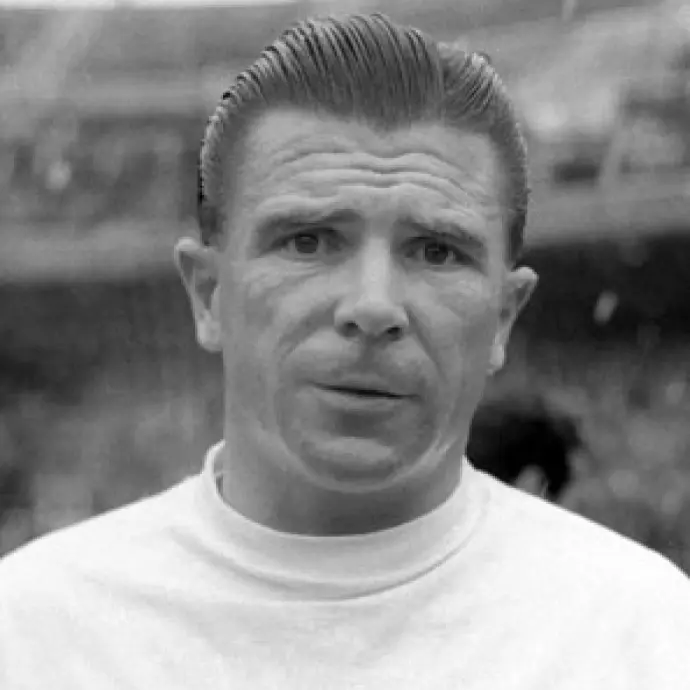
- Age : 32/33 years old
- Club : Real Madrid
- Statistics : 40 games, 50 goals, 23 assists
- Trophies : Champions League, Intercontinental Cup, Liga Vice-Champion, Finalist Spanish Cup
- Individual Awards : Champions League POTY, Champions League TOTY, Champions League Golden Shoe (12 goals), Liga TOTY, Liga Golden Shoe (26 goals)
In 1960, Ferenc Puskás was an unstoppable force of vintage brilliance—aging like fine wine and roaring through Europe with Real Madrid. At 33, he led Los Blancos to a La Liga title, topping the scoring charts with 25 goals, a feat that made him the Pichichi winner and silenced every doubt about his longevity. His left foot remained a scalpel, slicing through defenses with uncanny precision, while his partnership with Alfredo Di Stéfano created one of the most feared duos in football history. But the crowning jewel came in the European Cup final at Hampden Park. Facing Eintracht Frankfurt, Puskás unleashed one of the greatest performances ever seen—netting four goals in a 7–3 masterclass. It was a final that redefined attacking football, and Puskás stood at its blazing center, orchestrating chaos with poise and devastating grace.